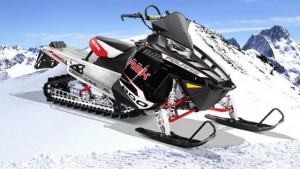How do Snowmobiles Work
How these vehicles traverse icy terrain?
In the pursuit of getting from A to B as quickly as possible, it was only a matter of time before we told traditional skis to ‘skid off and invented the snowmobile. The roots for this snowy-terrain vehicle are in military technology, where the rubber in the off-road tracks was proven to work even in adverse winter conditions.
A Canadian inventor called Joseph-Armand Bombardier took the design, adapted and refined it to create the first single-passenger snowmobile in 1959: the Ski-Doo. Bombardier Industries has gone on to be a leader in the snowmobile market, while the snowmobile itself has become the de facto standard for fast travel across ice and snow-dominated landscapes.
The aerosan
Military use of the snowmobile dates back to the early-2oth century, when the Soviet Red Army used a light vehicle on skis that used an aeroplane propeller, called the aerosan. It was used as a transport and light-goods vehicle for medical supplies at first, but during the 1939-1940 Winter War against Finland, the KM-5 and OSGA-6 were equipped with a machine-gun and proved useful reconnaissance and raiding vehicles.
Polaris 800 Pro-RMK Snowmobile
 The Polaris 800 Pro-RMK may be the latest in snowmobile solutions, but it’s based on the same engineering innovations that the first commercial snowmobiles were designed with. A quartet of components – engine, clutch, tracks and skis – ensure this beast Is capable of swift and reliable travel across snowy ground.
The Polaris 800 Pro-RMK may be the latest in snowmobile solutions, but it’s based on the same engineering innovations that the first commercial snowmobiles were designed with. A quartet of components – engine, clutch, tracks and skis – ensure this beast Is capable of swift and reliable travel across snowy ground.
Windshield – Keeping the wind out of your face is even more important in freezing arctic conditions.
Handlebars – Tanks and construction vehicles use variable track speeds to steer, while snowmobiles use the handlebars to turn the skis.
Clutch – The engine uses a primary and secondary clutch system to ensure smooth gear-changing at all times.
Chassis – A snowmobile chassis needs to be as strong and as light as possible: this model is just over 180kg (400lb).
Shock absorbers – This is one component that has dramatically improved through the decades. Shocks not only help you maintain control but also make the ride much more comfortable.
Tracks – The 38cm (15in)-wide tracks are similar to those on tanks, except made of rubber or aluminium. They can be equipped with studs too, for extra traction.
Engine – A similar design to engines found in jetskis, it has a large gear mechanism that turns the tracks.
Facts and Statistics about Snowmobiling on snowmobile.org
